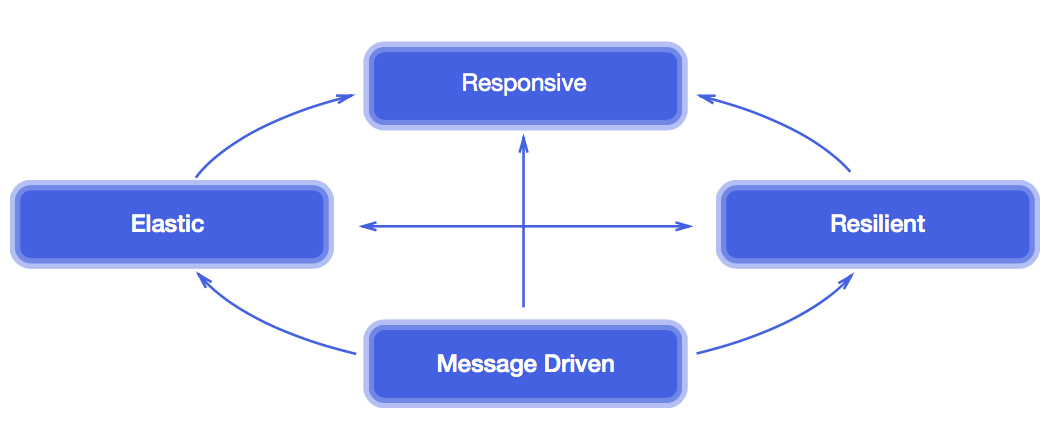3.4. Microservice Reactive¶
Reactive System Traits
Responsive
Resilient
Elastic
Message Driven

Figure 3.28. Reactive System Traits¶
3.4.1. Responsive¶
The system responds in a timely manner if at all possible. Responsiveness is the cornerstone of usability and utility, but more than that, responsiveness means that problems may be detected quickly and dealt with effectively. Responsive systems focus on providing rapid and consistent response times, establishing reliable upper bounds so they deliver a consistent quality of service. This consistent behaviour in turn simplifies error handling, builds end user confidence, and encourages further interaction.
3.4.2. Resilient¶
The system stays responsive in the face of failure. This applies not only to highly-available, mission critical systems — any system that is not resilient will be unresponsive after a failure. Resilience is achieved by replication, containment, isolation and delegation. Failures are contained within each component, isolating components from each other and thereby ensuring that parts of the system can fail and recover without compromising the system as a whole. Recovery of each component is delegated to another (external) component and high-availability is ensured by replication where necessary. The client of a component is not burdened with handling its failures.
3.4.3. Elastic¶
The system stays responsive under varying workload. Reactive Systems can react to changes in the input rate by increasing or decreasing the resources allocated to service these inputs. This implies designs that have no contention points or central bottlenecks, resulting in the ability to shard or replicate components and distribute inputs among them. Reactive Systems support predictive, as well as Reactive, scaling algorithms by providing relevant live performance measures. They achieve elasticity in a cost-effective way on commodity hardware and software platforms.
3.4.4. Message Driven¶
Reactive Systems rely on asynchronous message-passing to establish a boundary between components that ensures loose coupling, isolation and location transparency. This boundary also provides the means to delegate failures as messages. Employing explicit message-passing enables load management, elasticity, and flow control by shaping and monitoring the message queues in the system and applying back-pressure when necessary. Location transparent messaging as a means of communication makes it possible for the management of failure to work with the same constructs and semantics across a cluster or within a single host. Non-blocking communication allows recipients to only consume resources while active, leading to less system overhead.